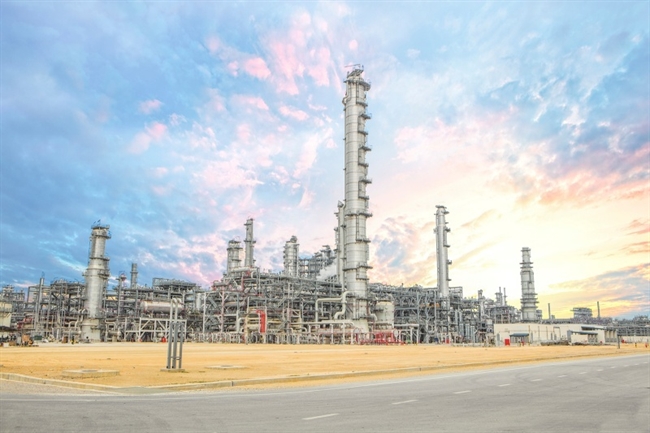Vietnam Oil and Gas Group Petrovietnam recorded five outstanding achievements in 2018, given the Party and State’s support and a staff of courageous intellectuals who have set out proper development strategies and took drastic actions.
1. Petrovietnam completed the downsizing of the parent company’s organizational apparatus. It was the first enterprise to complete the merger of party departments and specialized departments with similar tasks. The organizational and personnel restructuring of Petrovietnam’s administration apparatus was urgent to consolidate and improve its managerial effectiveness to meet requirements in the new situation and fulfil Petrovietnam’s development objectives in the future. Petrovietnam has completed and issued a handbook on the oil and gas sector’s culture, which, for the first time, specifies a code of moral and professional conduct for Petrovietnam leaders and managerial staff. The flame of the oil and gas sector which has been passed from one generation to another and creates the cultural identity of the sector is the value every person working in the oil and gas sector must respect, preserve and develop.
2. Petrovietnam surpassed its planned production and business targets, especially the targets on increase of oil and gas reserves and output, and financial targets. The group fulfilled all its 2018 government assigned targets ahead of schedule. The total oil and gas output topped 23.98 million tons of oil equivalent, up 5% from the plan. The production of nitrogenous fertilizer reached 1.63 million tons, surpassing 5.7% of the annual plan. The total revenue hit 626.8 trillion dong which was 96 trillion dong (18.1%) more than planned and up 25.9% over 2017. Its tax payment reached 121.3 trillion dong which was 47.5 trillion dong (64.3%) higher than expected and up 24.3% from 2017.

Nghi Son Refinery and Petrochemical Complex.

Working at PVD.
|
3. Petrovietnam completed the equitization of three enterprises: Petrovietnam Power Corporation (PV Power), Petrovietnam Oil Corporation (PVOIL), and Binh Son Refining and Petrochemical Joint Stock Company (BSR). These are Petrovietnam’s three major enterprises with a total audited state capital of 89 trillion dong. The successful IPO (initial public offering) of these enterprises brought in 16.5 trillion dong for Petrovietnam, with a surplus value of state capital of 7.5 trillion. Petrovietnam collected a total 18.6 trillion dong from the equitization of and state capital withdrawal from these enterprises. After being equitized, these enterprises have encouraging business results.
4. Petrovietnam officially operated Nghi Son Refinery and Petrochemical Complex with a total investment of 9 billion US dollars and a processing capacity of 200,000 barrels of crude oil/day (10 million tons/year). Nghi Son Refinery and Petrochemical Complex is one of the key national oil projects in Vietnam. The commercial operation of the complex is politically, economically and socially significant, and is important in maintaining defense and security and ensuring national energy security. Together with the currently operating Dung Quat Oil Refinery, the complex will help meet more than 80% of the domestic demand for oil and petrol, reducing dependence on imported oil.
5. Poor performing projects (the Dinh Vu Polyester Plant (PVTEX), the Dung Quat Bio Ethanol Factory, and the Binh Phuoc Bio Ethanol Plant) reported positive changes. After more than half a year of resuming operation, PVTEX marketed 2,200 tons of quality DTY (drawn textured yarn) fibers. The Dung Quat Bio Ethanol Plant stabilized operation and introduced quality products to the market. The maintenance of the Binh Phuoc Bio Ethanol Plant was completed and the plant is ready for operation.
Petrovietnam